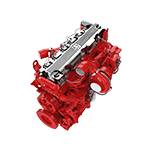Aug . 30, 2024 09:21 Back to list
Brake Drum Vibration
Understanding Brake Drum Vibration Causes, Effects, and Solutions
Brake drum vibration is a critical concern in the realm of vehicle safety and performance. It can impact the effectiveness of braking systems, compromise driving comfort, and lead to costly repairs if not addressed promptly. Understanding the causes, effects, and measures to mitigate brake drum vibration is essential for vehicle owners and automotive professionals alike.
Causes of Brake Drum Vibration
There are several factors that can contribute to brake drum vibration. One of the primary causes is uneven wear of the brake components. When brake pads or shoes wear down unevenly, they do not make uniform contact with the drum surface. This discrepancy results in vibrations as the braking system engages. Another common cause is drum warping, which can occur due to excessive heat build-up during braking. Constant heavy braking or frequent downhill driving can lead to thermal expansion and eventual deformation of the drum.
Improper installation or alignment of the brake components can also induce vibrations. If the brake drums are not mounted straight or secured properly, they can produce irregular contact with the shoes, causing vibrations during operation. Additionally, worn-out suspension components or misaligned wheels can contribute to the issue, further exacerbating the vibrations experienced during braking.
Effects of Brake Drum Vibration
brake drum vibration

The effects of brake drum vibration are manifold. From a safety perspective, excessive vibration can lead to diminished braking performance, increasing the stopping distance and compromising the ability to halt effectively in emergencies. This can pose serious risks to drivers, passengers, and other road users.
Furthermore, prolonged exposure to vibration can cause early wear and tear of brake components, leading to more frequent replacements and repair costs. It can also cause discomfort for passengers due to vibrations transmitted through the vehicle's chassis, affecting the overall driving experience.
Solutions to Mitigate Brake Drum Vibration
To address brake drum vibration, a multi-faceted approach is advisable. First and foremost, regular maintenance and inspections of brake components are essential. Mechanic professionals should check for uneven wear, and if found, replace the necessary components promptly. Resurfacing the brake drums can help eliminate minor warping and create a smoother surface for effective braking.
Proper installation of brake components is crucial. Ensuring that drums, pads, and other parts are fitted correctly will mitigate the risk of uneven contact. Additionally, monitoring the vehicle's suspension system and alignment can prevent vibrations from becoming an issue. Regular maintenance of these systems can prolong the life of the brakes and enhance overall vehicle performance.
In summary, understanding brake drum vibration is vital for maintaining vehicle safety and performance. By recognizing its causes, acknowledging its effects, and implementing effective solutions, vehicle owners can ensure more reliable braking, a smoother ride, and reduced maintenance costs. Regular inspections and addressing issues promptly are key to preventing brake drum vibration and enhancing driving safety.
-
Explore Japan: Ultimate Travel Guide & Authentic Experiences
NewsAug.19,2025
-
Your Brake Drum Man: Premium & Reliable Brake Drums for Sale
NewsAug.18,2025
-
ROR Web Development: Build Fast, Scalable, Secure Apps
NewsAug.17,2025
-
Scania Brake Drums: OEM Quality for Optimal Safety & Durability
NewsAug.16,2025
-
R.V.I: Advanced Remote Visual Inspection for Precision
NewsAug.15,2025
-
Discover HYUNDA: Innovative Vehicles, Equipment & Solutions
NewsAug.14,2025
